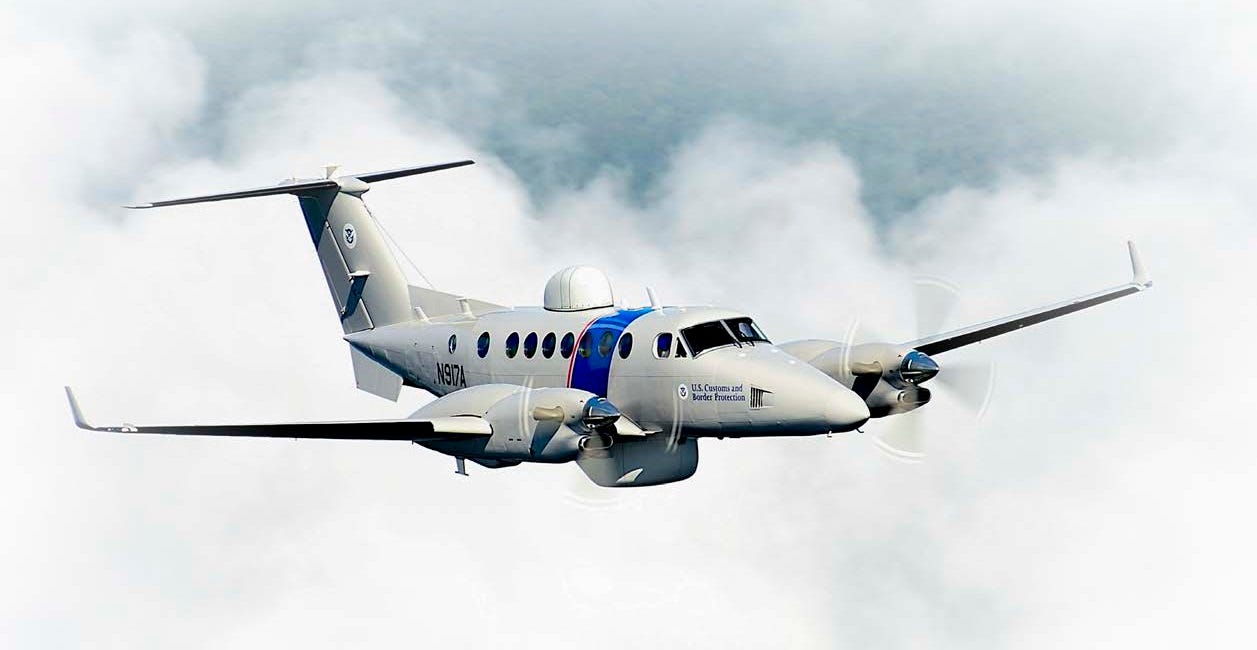The quiet integration of 'Project Maven' and the Pentagon's cloud with 'Minotaur' maritime border surveillance
CBP and the Coast Guard fly maritime surveillance aircraft equipped with the Minotaur Mission System, a data fusion system integrated with 'Project Maven' and now hosted in Amazon's cloud.

The U.S. Coast Guard serves as a natural bridge between military and domestic surveillance missions, as the only military branch of the Department of Homeland Security. In addition to its primary maritime law enforcement mission, the Coast Guard can be tasked by the U.S. President as a component of the Department of the Navy.
Though the Pentagon’s pathfinder project for the integration of commercial artificial intelligence into drone and satellite targeting systems, “Project Maven,” received enormous public attention due to public protests from Google employees, reporting has largely missed Maven’s integration with the primary aerial data fusion system of the U.S. Coast Guard and U.S. Customs and Border Protection (CBP). The Minotaur Mission System, originally developed for the U.S. Navy by the Johns Hopkins University Applied Physics Laboratory, had begun integration with Project Maven by early 2019 through subcontracts to Alion Science and Technology, continuing through at least 2021 through a subcontract to Prescient Edge Corporation, a technology integrator owned by former Air Force contracting officer Alexander Granados.
The trade publication Shephard Media also reported in 2019 that Minotaur was “the underlying software backbone for the Pentagon’s Artificial Intelligence (AI)-based Project Maven initiative.”
As described by CBP’s Frontline Digital Magazine, the U.S. Navy first requested help from CBP’s Air and Marine Operations (AMO) division in 2006, as part of testing Minotaur’s vessel detection capabilities. “After flying with the [Minotaur] software, AMO realized it could be modified to catch smugglers and border crossers,” Frontline reported, adding that: “Through the Navy’s contract with the Johns Hopkins University Applied Physics Laboratory, AMO directed the laboratory in crafting software with the features needed to supercharge its surveillance abilities.”
According to Frontline, Minotaur “links sensors, cameras, radar and communications equipment into a single, more automated system, allowing operators to more efficiently identify and track any suspicious or illegal activity on both land and sea.”

A recently completed $1.5 million contract between Prescient Edge and the air and marine contracting division of CBP publicly disclosed that the agency was experimenting with running the Minotaur Mission System aboard its “multi-role enforcement aircraft” using Space X’s Starlink for internet connectivity. And a partially redacted contracting document from mid-June reveals that Naval Air Systems Command paid Amazon Web Services nearly $1 million for Minotaur cloud computing infrastructure as part of Amazon’s widely reported participation in the Pentagon’s $9 billion ceiling Joint Warfighting Cloud Capability (JWCC) contract, whose other three participants are Microsoft, Oracle, and Google.
Amazon was also a subcontractor on at least three separate Project Maven contracts led by the high-tech staffing firm ECS Federal, codenamed “Avalanche,” “Kubera,” and “Pavement,” receiving at least $19 million for the work. Prescient Edge’s integration of the Johns Hopkins APL Minotaur software with the ECS Federal Maven effort was funded through Avalanche, which awarded Amazon $3 million for a data fusion project involving U.S. Northern Command and the National Guard. Amazon also received $8.9 million for an “edge ARM model” through the now-censored Pavement contract, apparently to contribute artificial intelligence computer vision software to Maven capable of running on ARM processors equipped on General Atomics MQ-9 Reaper drones — in Pentagon parlance, ‘at the edge.’
(Fellow JWCC participant Microsoft also received $12.4 million through Pavement for the “full motion video (FMV) sprint 3 effort, focusing on model development for FMV data.”)
The existence of public contracting records detailing the integration of Project Maven with the Coast Guard’s Minotaur Mission System was first reported by the author more than three years ago, though Amazon’s role as the cloud provider for Minotaur through JWCC has not been previously reported, nor has CBP’s experimentation with Starlink as the communications system for its Minotaur surveillance aircraft. The Pentagon confirmed on Tuesday that it had invoked Federal Acquisition Regulation (FAR) provisions 4.606(c) and 4.606(d) to revoke public summaries of the $142 million Pavement contract first analyzed by the author.

One of the largest recipients of Minotaur funding has been the mission technologies division of the military shipbuilding company Huntington Ingalls Industries, which acquired Alion Science and Technology in mid-2021, roughly two years after Alion received more than $9 million to integrate Maven and Minotaur as part of ECS’s “Kubera” Maven contract. HII’s mission technologies division announced its receipt of a $244 million contract late last year “to integrate Minotaur software products into maritime platforms for the U.S. Navy, U.S. Marine Corps and U.S. Coast Guard.” Johns Hopkins APL, the original Minotaur software developer, has also received $13 million from an ongoing contract with CBP’s air and marine contracting division for “Minotaur rapid reaction and prototyping engineering support.”
With Donald Trump’s confirmed re-election earlier today, the usage of military artificial intelligence for border enforcement is likely of increased public interest. As reported by the author roughly two weeks ago, Florida Governor Ron DeSantis’s office signed a $793,000 contract for cellphone interception equipment from the Israeli surveillance firm Cognyte in late December as part of the Operation Vigilant Sentry program run in collaboration with the Coast Guard to capture Haitians attempting to immigrate to Florida.
Amazon Web Services refused a request for comment, and Naval Air Systems Command did not respond to a similar request.

No wonder Jeff Bezos gave a warm congratulations to Donald Trump today.